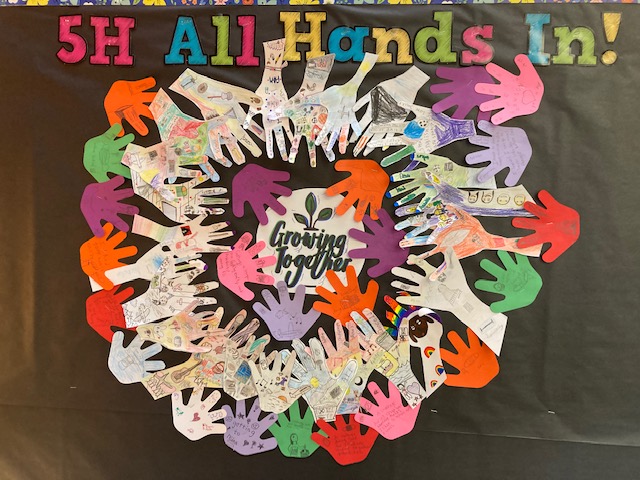Before the pandemic, we typically saw short-term traumas, such as divorce or death of a family member or animal companion, and now children are facing long-term traumas that have ebbed and flowed for more than 20 months. They see everyone and everything around them affected—their teachers, parents, friends, and daily life. This long-term period of stress and elevated cortisol levels have shown up emotionally and behaviorally in students. We also have seen gaps in overall learning as well as those in executive functioning, disciplined learning, and using conflict-resolution skills on the playground.
As the 2021–2022 school year approached, I started to think about how I, as the school’s mental health consultant, wanted to help our students begin reflecting on the growth they have made since the start of the pandemic. I wanted to emphasize the resilient rebuilding of our individual and schoolwide stained-glass windows. In psychology, various research studies have shown that traumatic experiences can have a positive impact on our cognitive restructuring and sense of self-efficacy. Or, as philosopher Fredrich Nietzsche said: “Out of chaos, comes a dancing star.”
Putting the Pieces Together
For the past 25 years, I’ve taught brain-based mental health concepts in pre-kindergarten through eighth grade, every other week for 30–45 minutes. But as the return to school approached, I knew we’d need to focus on resiliency and growth, not a continued processing of loss, anxiety, and stress.I thought about how I could help reclaim our strong community of support. Through a yearlong theme, Enriching Hearts Together, I planned to create a schoolwide project for all students to complement the individual and small group services I provide. By grade level, the activities would show how our students and families worked together to get through the past 20 months.
Pre-kindergarteners: Using the concept of “warm fuzzies,” excerpted from Alvyn M. Freed’s T.A. for Tots: And Other Prinzes, we talked about all the happy, loving things in the students’ lives. They drew a picture of one of their warm fuzzies on a paper hand. One student drew a picture of himself. We then talked about how you can be your own warm fuzzy.
Kindergarten and first grade: I added a “cold prickly” named COVID-19 on the dry-erase board. I then reminded students of last year’s lessons: When life delivers a cold prickly, you need to surround it with warm fuzzies to make it smaller. We brainstormed the various things they liked about COVID-19 restrictions (i.e., being home with family and special events like movie nights), how they helped their family (many talked about doing chores, cooking, wearing masks, and washing hands), and what new activities they took up during the pandemic (bike riding was number 1). The students then drew or wrote their experiences on paper hands.
Second through eighth grade: Using a teeter-totter (seesaw) graphic to best demonstrate ups and downs, I discussed the different types of stress we all had been under. We talked about how we balance this out by focusing on our growth. Using the same hands as the other grade levels, these students wrote or drew answers to five questions: What did you like? How did you help family or friends? What new activities did you start? What obstacle did you overcome? What did you learn about yourself that can help you later in life? Students were able to answer the questions as they desired. Some included a gratitude jar, the self-insight around developing physical and mental fortitude, discovering the peacefulness of gardening and embracing the joy of solitude. We also spent some extra time talking about what could help us feel as though we were returning to normal. After-school sports and class field trips were the top two.
Life Lessons
These activities have truly shown our resilience and growth through this most challenging time. We’ve displayed the hands in each classroom and around the school on bulletin boards. The students’ work reflects independence, loving support, hopefulness, empathy for others, perseverance, optimism and resiliency. And these are among the growth factors that will help our students overcome adversity throughout their lifetimes.When this group of students become grandparents themselves, it is their survival and growth that we hope they will remember. As one first grader said to me when asked about what she would say about the pandemic when she is a grandma: “Well, it wasn’t that bad. We spent a lot of family time together.”
Perhaps therein lies the dancing star.
